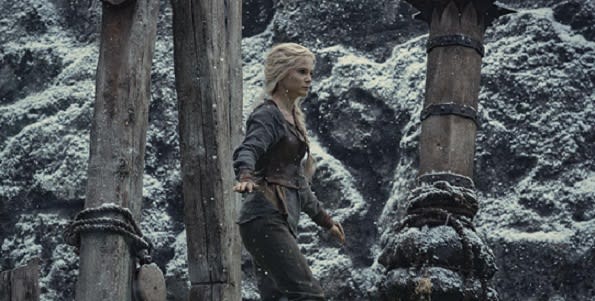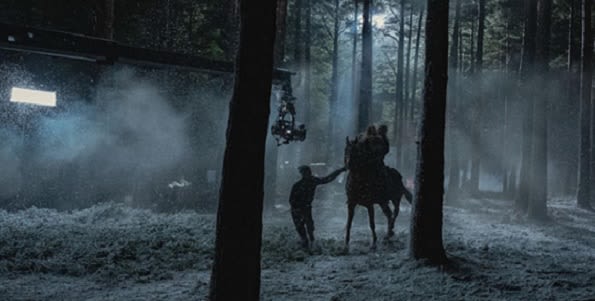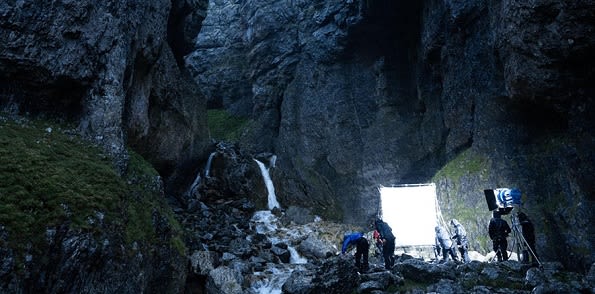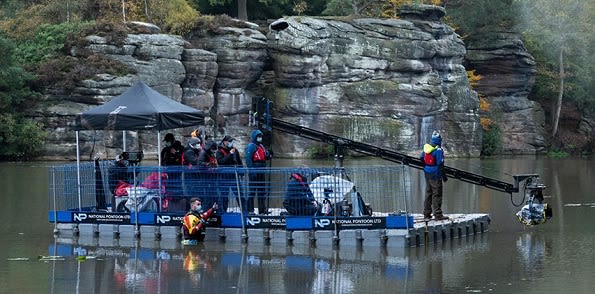The Witcher S2 filmed in 15 key UK locations
Key Locations include Bourne Wood, Deepcut Surrey, Plumpton Rocks, Fountains Abbey and Frensham Ponds
By Nia Daniels 16 Dec 2021

The second series of Netflix’s fantasy drama, The Witcher, filmed entirely in the UK, utilising around 15 key locations.
The first series had shot in European locales including Poland, Spain and Hungary, but the pandemic restricted the choice for S2. The production base was at Arborfield Studios, with production designer Andrew Laws heading up the creative team.
Arborfield’s backlot became the site for the numerous village sets and the exterior of Kaer Morhen.
“Kaer Morhen is a setting, but it’s really like a character in Season 2,” said Laws. “We were also aware that it’s an environment familiar to those who have read the books and played the video games, so we needed to honour that source material but also elevate it to a new level to keep it exciting for the audience. That was a great challenge, but also a responsibility that we took very seriously.”
The Witcher Obstacle Course
The exterior of Kaer Morhen also proved difficult because of the deadly Witcher obstacle course the production team had to build. “It was a very long evolution to get to the obstacle course. We had to really explore the idea of what a Witcher version of an obstacle course would look like whilst avoiding the pitfalls and tropes of it becoming a TV game show obstacle course that can become very predictable.” Laws remarked. “We worked a lot on the dynamics and engineering of the course to make it really unpredictable and dangerous.”

Bourne Wood
The first day of location shooting took place in Coldharbour Wood in Chichester, where the art department built a full elven village hidden amongst the trees. Production also filmed in Bourne Wood in Farnham, a favourite with film producers which can be spotted in numerous films including Gladiator, Jurassic World: Fallen Kingdom, and Harry Potter and the Half-Blood Prince.

Deepcut Surrey
The cast and crew worked for five days at MoD Deepcut Surrey, a major training base for the British Army, which was used as part of the exterior to Kaer Morhen — including the Killer Trail, a rocky path encircling the Witcher's home.
The unit then continued their exterior location work in the Lake District in Cumbria, where they filmed at Blea Tarn. The cast, crew, and all the filming equipment had to be winched down into one of the caves of Hodge Close Quarry for a pivotal scene. Production also visited Rydal Cave, a man-made cavern which, over 200 years ago, was a busy working quarry supplying roofing slate to the surrounding villages.

Low Force Waterfall
Production then shifted to County Durham, home to the Low Force Waterfall in Teesdale, an 18-foot-high set of falls on the River Tees. It is situated within the North Pennines’ Area of Outstanding Natural Beauty and the European Geopark. The bridge that crosses it, Wynch Bridge, was built in 1830, with current advice suggesting that one person only crosses it at a time…

Gordale Scar
The cast and crew next moved into Yorkshire, spending three days filming at Gordale Scar, in the stunning Yorkshire Dales National Park. This hidden gorge has two waterfalls and dramatic limestone cliffs which are over 100 metres high.
"We began to explore Yorkshire a lot more deeply and found some just absolutely extraordinary locations up there,” Laws commented. “The Lakes area afforded so many variations without being too spread apart.”
Plumpton Rocks
Plumpton Rocks, a last-minute find by the location department, is a Grade 2 listed man-made lake surrounded by gardens and towering rocks, eroded over hundreds of years by wind and rain. It has been described by English Heritage to be of “outstanding interest.”
“In the end, it satisfied all the little pieces,” Laws said of Plumpton Rocks.

Fountains Abbey
The final week on location in Yorkshire was spent filming at Fountains Abbey, one of the largest and best-preserved ruined Cistercian monasteries in England.
Frensham Ponds
Filming also took place at Frensham Ponds, Frensham Great Pond and Frensham Little Pond in Surrey. The latter two were built during the Middle Ages to provide fish for the Bishop of Winchester’s estate. The expanse can also be seen in the 1959 film The Hounds of Baskerville, the British comedy Carry On Jack, and, more recently, The Mummy, doubling for the River Nile.
All images via Netflix.
Latest news & features
Featured profiles
Promote your services with KFTV
Choose from three profile types - Basic, Silver and Gold
Create ProfileWe offer a range of display advertising opportunities.
Learn More